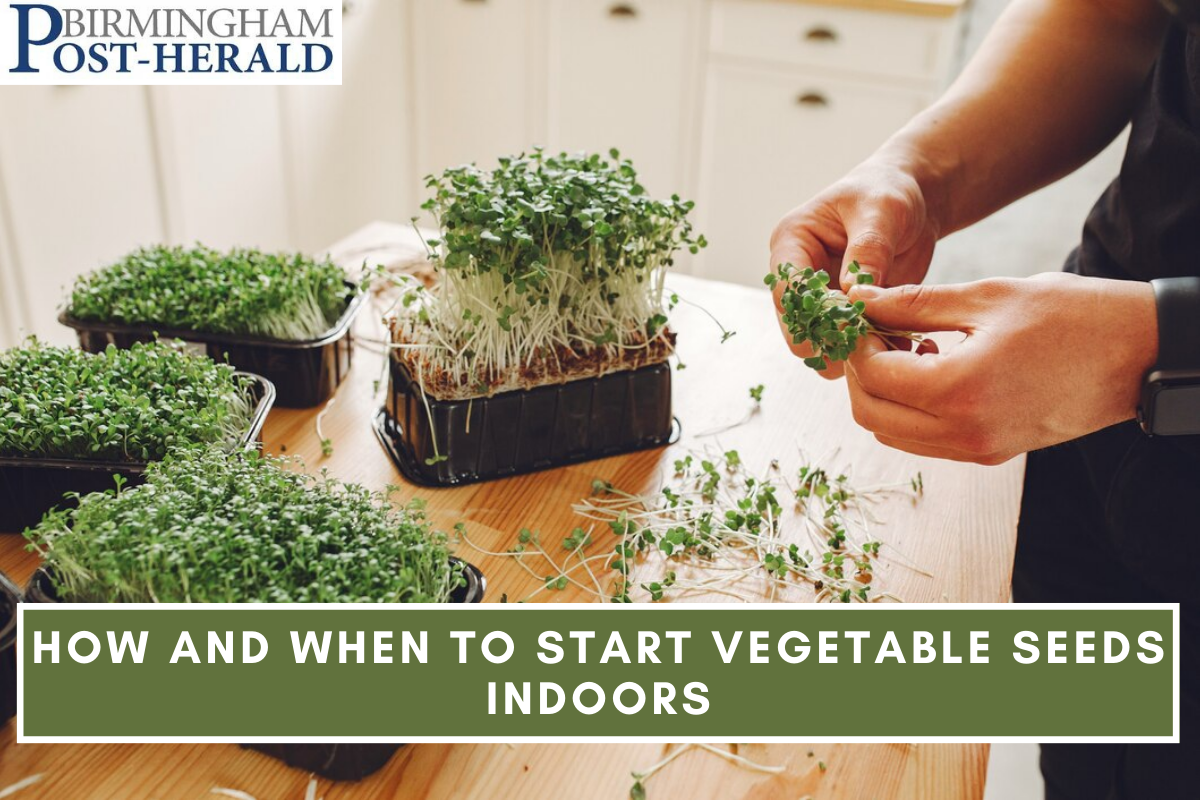How and When to Start Vegetable Seeds Indoors:-This season, are you starting veggies from seed? Giving your plants a head start by starting them indoors will help them get ready for spring planting. Gardening guru and former organic farmer Logan Hailey explains in this post when and how to start vegetables from seed indoors this season!The greatest method to get your garden going while it’s still cold outside is to sow seeds indoors. Vegetables of all kinds, including peppers, tomatoes and chard, grow well as transplants.
How and When to Start Vegetable Seeds Indoors
Starting Seeds Indoors in 10 Steps
- Planting a small seed in the ground also means planting the optimism and enthusiasm of a fresh gardening season. However, you want to confirm that your investment is beneficial. Consider this your road map to becoming an expert indoor seed starter. Although there is no assurance that every seed will germinate, following these instructions will increase the likelihood of robust, high-yielding plants.
Step 1: Planning & Timing
- The most prosperous gardeners are planners as much as planters. Make sure you time your planting correctly before beginning the process of seeding. Although nature doesn’t follow a precise schedule, we can use a few resources to predict her next move:

Also see:- Everything about Calculating Calories
Step 2: Order 20% More Seed Than You Need
- Think about how many plants you intend to raise each season when placing your seed order. To supply one head of broccoli each week to my family from a north Texas garden, I will need to succession plant at least forty broccoli seeds. This implies that in order to account for crop loss or unsuccessful germination, I need order a packet of 50–60 seeds.
Step 3: Select Your Soil Mix
- Adding a seed-starter mix is the next crucial step to successful seeding. A young plant can only withstand the conditions in which it is raised. Although seasoned gardeners frequently prepare their own seedling mix in order to reduce costs, novices are better off buying a pre-made mixture from the market.
- A balanced blend of high-drainage elements like perlite or vermiculite and organic matter like compost or peat moss makes up the ideal soil mix for seed starting.
Step 4: Choose Your Containers
- Technically, seeds can be started in any kind of container. You may use soil-blocks that don’t require a pot, plastic bowls, or even empty egg cartons. Nonetheless, the most popular varieties of containers for seed beginning are cell trays, open flats, 6-packs, and tiny pots.
- Make sure your containers have drainage holes before sowing. Use a spray bottle with a diluted bleach solution to clean and sanitise the pots in order to prevent diseases that cause seedlings to damp off. Below is a summary of the kinds of vegetables that ought to be in each seed tray, along with some planning advice.
5 Pack Seed Trays
- Due of their ease of handling and transportation, six-celled trays, sometimes known as ‘6-packs’, are the most popular seedling trays available at garden retailers. But because the cells are so close together, seedlings are more likely to become “leggy” or overcrowded.
- Be particularly mindful of how quickly the plants fill their cells when sowing in 6-packs. It’s time to plant those kids in the ground when you notice roots emerging from the bottom! Before transplanting, you don’t want your seedlings to get overgrown and root-bound.
If you Like this Article How and When to Start Vegetable Seeds Indoors Please Share With Your Friends And Family Members.
